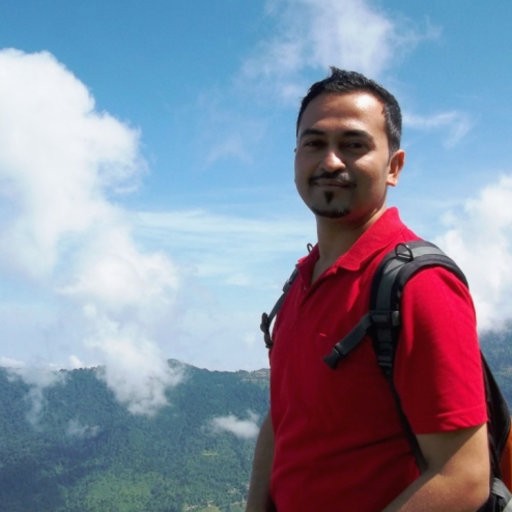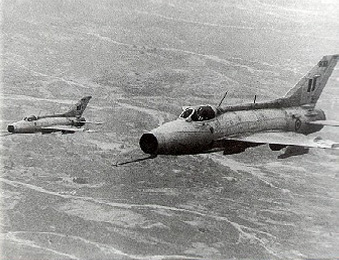The Past in the Present: Understanding the ‘Sernung’
Even while receding into a past of over 50 years, the Insurgency locally referred to as the Rambuai (‘troubled/disturbed land’) continues to be a part of everyday conversations among the Zo hnahthlak (Zo/Mizo people) in and around Mizoram. As one of my respondents, Pu Zaliana, mentioned: ‘the memory of the Rambuai remains a lived-in reality, so much so that it has become a metaphor for violence, fear, domination, difference, separation and the unsatisfactory resolution of the problems of the Zo people. Rambuai has become the definitive Mizo expression to denote the troubled times or the disturbing histories of the region. It is a Sernung– a living scar.’ The sufferings caused by the army atrocities including rapes, village regroupings, the experience of the Bombing of Aizawl and the experience of fleeing into the jungles of Mizoram continues to haunt the memories of the Zo hnahthlak.
The Shelling of Aizawl 1966: Forgetting and Remembering
The memory of the shelling of Aizawl in 1966 and the fire on the hill town is intensely contested. For a more substantial part of the Congress rule and Gandhi family’s control in New Delhi, the Centre was in denial that the bombings ever happened. What I call Deliberate Amnesia is best summed up in the statement of then Prime Minister Indira Gandhi: “We did not Bomb Aizawl…we dropped rations for the people.”
New Delhi’s apathy to the shelling of Aizawl in 1966 can be construed through the statement made by the then Home Minister Gulzarilal Nanda:
“Crush Them… An ram alawm kan duh, a mihringte chu sipai motor-in phur khawm vek ila, India state tinah sem darh vek ila, buaina chu a reh mai ang.” (Crush Them…we are more interested with the territory, the people can be rounded off in army vehicles and randomly offloaded in the different states of India, the secessionist movement would cease.) (Translations Mine)
While the Delhi was in denial, the immediate centre of administration Guwahati, Assam, was equally in denial that it ever occurred. The mustering of Ahom identity and Assamese hegemony on the margins in these borderlands unleashed a wave of disgruntledness.
Pu Zaliana, like many others who witnessed the troubled times, blames the Assam politicians for Mizoram’s misery. Zaliana (Personal Interview, 2008) concludes with anger:
“Assam’s politicians are to be blamed for they tried to impose Ahom identity, and they felt the Indian Army’s action to be a befitting response to the anti-Ahom response that they got from the Mizo Hills. Mizoram was sealed-off, and the armed forces were given a leeway to take maximum action.”
The murmurs of the winds through the Bamboo were unintelligible to the Vai, and the inability to forward an apology to the Zo hnahthlak becomes a deliberate act of forgetting.
The intergenerational collective memories of the Zo hnahthlak, on the other hand, has commemorated this memory through stories of the Rambuai and made ‘collective remembering’ its living purpose. The ‘collective remembering’ every year in March brings to the streets murmurs demanding an ‘Apology’ from the Government of India. The MZP (Mizo Zirlai Pawl), the YMA (Young Mizo Association), and other vigilante groups mourn and observe the ‘Zoram Ni’ (Zoram Day) -the day Aizawl was shelled by the Indian Armed Forces or the ‘Vai Sipai.’
The embeddedness of the memory of the shelling of Aizawl back in 1966 is evident from the fact that as late as 2019 there is still a loud public outcry demanding an apology from the Government of India and in particular from the Indian National Congress Party for all the atrocities committed during the troubled times by the CRPF, Indian Army and Civilian Police in the course of its counter-insurgency strategy.
What happened in the Buai kum?
Like the Rambuai, the ‘Buai kum’ (troubled year) is an emic reference to the year when Aijal/Aizawl was bombed and set on fire by Indira Gandhi’s government in 1966. On this tragic day, the hill town of Aizawl was turned to flames and ashes by four Jet Fighters of the IAF. Residents (Mizo, Gorkha, and others) took refuge in jungles for weeks at a stretch in hiding to avoid the atrocities of the Indian forces. The afterlife of the shelling was that curfews, raids became normalized as a part of life in Mizoram. The shelling of Aizawl robbed the township of its few colonial structures and thatched settlements etc. The shelling of the Aizawl followed arson and looting of properties of the resident locals and ‘Vai’ by the families of the Assam Rifles. Everything changed after the ‘Buai kum’ (Informal discussions with a resident of Aijal/Aizawl, Seema Chhetri Chakraborty, 2008).
Pu Zaliana (Personal Interview, 2008) said: ‘during the insurgency times, we (Zo/Mizo) were backward, but we had our sense of humanity intact. The Indian Army had lost its sense of humanity; they did not differentiate between MNF and the innocent civilians’.
Memory and Apology: the continued exasperation, and displacement of angst
Post Peace Accord 1986 and the elevation to statehood in 1987, the memory of the Rambuai and Buai kum fed into the imagery of a ‘traumatised territory’ that had been affected by multiple partitions beginning with the ‘Chin Hills Regulations 1896’. The memories of the estrangement of the Zofate/Zo hnahthlak (Zo/Mizo-Kuki-Chin people) following the loss of territories across the borders in Myanmar, Bangladesh, and within the neighbouring states of Tripura, Assam, and Manipur fed into the more massive insecurities of securing the sacred ‘Zo territory.’ The continued exasperation resulted in a displacement of angst. The Assam Rifles has thus become a prominent public irritant to the Zo collective memory, and its relocation from the heart of the city of Aizawl to a less prominent site topped the agenda of the Zo nationalist program. Though the Battalion forms an integral part of Mizoram’s history, political considerations certainly warrant relocation at a less intrusive site even at some cost. Many consider the whole issue of removing the Assam Rifles from the heart of the city to be trivial and diverting attention from other glaring issues like the ‘Aizawl Syndrome’ that haunts the city. An interesting line of argument placed by the respondents was that ‘the demand for removing the Assam Rifles to ‘Zokhawsang’ (an area in the fringe of Aizawl city) could provide a possible ‘breathing space’ to expand the city and solve the problems of hasty urban growth.’
The site of the Assam Rifles Battalion Headquarters at Aizawl post the ‘Buai kum 1966’ became invested with newer semantics. The ‘Sipai (Sepoy) compound’ became a constant reminder of the years of counter-insurgency and the repressive action of the Centre that is the ‘Vai.’ Though the Assam Rifles were not directly responsible for all the violence during the Insurgency over time, it has been objectified as the source of pain in public memory. The Assam Rifles compound (AR compound) thus became the constant public irritant and the space of the ‘other’ which is protected or sealed–off with a boundary that becomes inaccessible and largely unnavigable for the natives and the agencies of the Nexus of Patriarchy. Removing the Assam Rifles from the centre of the city of Aizawl thus is interpreted to mean the final solution to satiate the ‘Sernung’ (living-scar) from public memory.
The project of removing the Assam Rifles or the ‘Sipai’ entered the narratives of the nationalist discourse and interpreted as the triumph of Zo/Mizo nationalism over the ‘other.’ The whole project is a public effort to cut down the ‘Other’ to its size and show the ‘Vai’ their space in Mizoram. The site of the Assam Rifles Headquarters is selected as the final battleground where the Vai and the Zo/Mizo mi leh sa’, ‘Zo hnahthlak’ contest their spatial domain. This strategy, of a selective tradition of nationalism, is the key to the consolidation of the idea of the state and is produced by the institutions and personnel of the state system. This tradition is critical to the construction of hegemony by agents and institutions of the state system. The production of a selective tradition by the state system is a powerful and vulnerable hegemonic process. A hegemonic selective tradition is always challenged by alternative and oppositional traditions that dispute dominant articulations of space, time, and substance and can even question the identity between nation and state.
Collective Social Memory is indeed the moving force of all narrations of identity, national or otherwise, displacement or movement, good times as well as bad times. The collective memory approach construes that history enters into social life through how individuals, organizations, and states interpret, recall, and commemorate a particular past. Most accept that the “facts” of history require interpretation, and few would argue that the “facts” of history are determined only by the needs of the present. The obdurate reality of the past and the interpretations of the present create collective memory.
Memories are objects that tumble out unexpectedly from the mind, linking the present with the past. From the narratives of the past, it becomes possible to understand how people or persons perceive their victimisation and to what extent it comes into conflict with the identity ‘imposed’ on them or the identity that they accept for themselves. It is argued that “a traumatized memory has a narrative structure which works on a principle opposite to that of any historical narrative.” A narrative is always related to a sense of the self and is told from someone else’s perspective, and in this sense, narratives concentrate on particular events in a particular space and time. In other words, “memory begins where history ends.”
“Sorry seems to be the hardest word” (Elton John, ‘Blue Moves’1976)
The experience of deployment of the IAF back in 1966 in the “disturbed” Mizo Hills District and the fallout should be a lesson in dealing with disgruntledness of citizens in a democracy. However, like in the past 54 years, the murmurs of the collective memory of the Zo hnahthlak would hardly echo beyond the region. Protest and candlelight vigils that mark contemporary collective action in streets and campuses and also ‘online Andolan’ across South Asia will abstain from condemning those guilty. Few regional papers from the North East might flash the ‘news’ while the national mass media would remain oblivious, and the political parties across the ideological spectrum at New Delhi would maintain a stoic silence and tender no apology for the incident that occurred on 4th and 5th March 1966. Until a meaningful apology flows from New Delhi, the ‘Buai kum Sernung’ would continue to be in circulation through a collective social memory of the Rambuai and the Buai kum among the Zofate/Zo hnahthlak.

The author is an Assistant Professor, Department of Political Science & Political Studies, Netaji Institute for Asian Studies, Kolkata; and member Mahanirban Calcutta Research Group (MCRG), Kolkata. Also Visiting Faculty, Department of South and South East Asian Studies (SSEAS), University of Calcutta.


